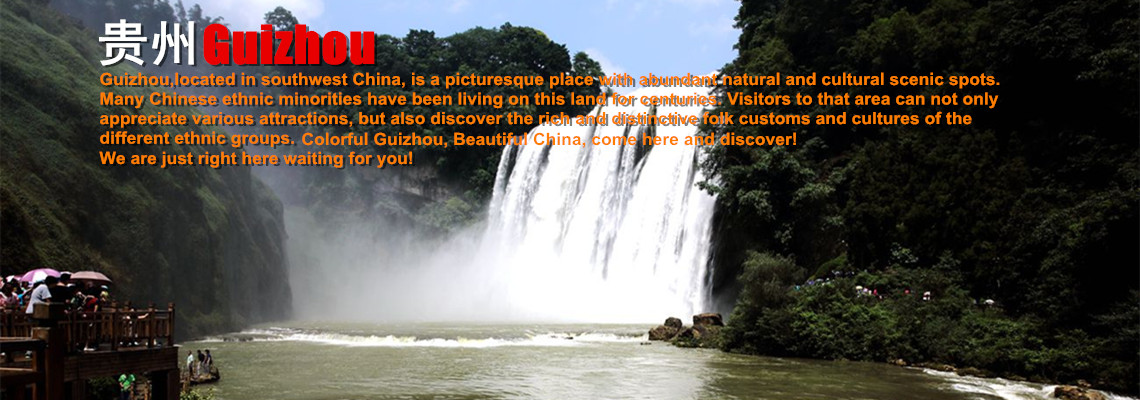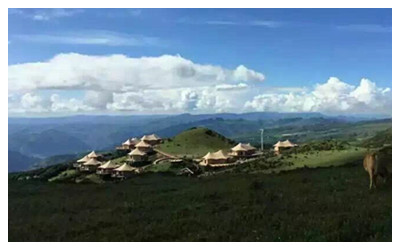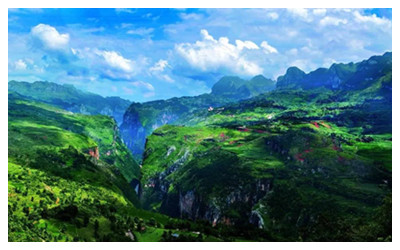
Wumengshan Geopark
 Guizhou Wumengshan National Geological Park is located in Liupanshui City, western Guizhou Province. It features the peak of Wumeng Mountain and its karst geology in the eastern slope. It has various types of karst geological relics and geomorphological landscapes formed in various periods since the Cenozoic. The typical plateau karst landform area is praised by geologists and scholars as “a large geological museum”.
Guizhou Wumengshan National Geological Park is located in Liupanshui City, western Guizhou Province. It features the peak of Wumeng Mountain and its karst geology in the eastern slope. It has various types of karst geological relics and geomorphological landscapes formed in various periods since the Cenozoic. The typical plateau karst landform area is praised by geologists and scholars as “a large geological museum”.
What to see?
Wumengshan National Geological Park is divided into two major parks, namely Beipanjiang Gorge Park and Biyundong Cave Group Park.
Beipanjiang Gorge Park has Shuicheng Fenglin Scenic Area, Yushe National Forest Park, Beipanjiang Gorge Scenic Area, Yezhong Black Lang Monkey Nature Reserve, Ear Rotating Structure Platform Scenic Area, and Slope Upland (basalt Fangshan Terrace) Scenic Area,The Liuchehe Canyon Scenic Area and the Gesuo River Canyon Scenic Area are dominated by the majestic canyon scenery of the Panjiang Karst Grand Canyon in the north.
Biyun Cave Group Park has Danxia Mountain Scenic Area, Biyundong Scenic Area and Panxian Ancient City Scenic Area, featuring the strange cave resources of Panxian and the scenery of karst mountains.The Wumengshan National Geological Park is home to many ethnic minorities such as Miao, Buyi and Yi, with rich ethnic customs and rich national culture. The Yelang culture,  red culture and ancient city culture have a long history. At this point, visitors can participate in different national festivals at different times. The Miao nationality celebrates the flower-hopping festival on February 15th of the lunar calendar and the fifth day of May. The Lunar Festival is the Yi people’s torch festival on June 24th. Yi people dance, commonly known as jumping, all of which are eye-opening.
red culture and ancient city culture have a long history. At this point, visitors can participate in different national festivals at different times. The Miao nationality celebrates the flower-hopping festival on February 15th of the lunar calendar and the fifth day of May. The Lunar Festival is the Yi people’s torch festival on June 24th. Yi people dance, commonly known as jumping, all of which are eye-opening.
In addition, the red culture in the Wumengshan National Geological Park has a long history. Located in the old town of Panxian, the Red 2nd and 6th Army Pan County Conference Site was once the residence of the 2nd and 6th Army Corps of the Chinese Workers and Peasants Red Army. Originally known as the National Revolutionary Army built in 1928, Wuying, commonly known as the nine buildings. At the end of March 1936, the leaders of the Legion held a Pan County meeting here, decided to cross the Jinsha River and go north to resist the Japanese. Later it was identified as a provincial cultural relics protection unit.
The Wumengshan National Geological Park is a vast area with many attractions. Generally speaking, it is impossible to finish the day. You can choose according to the type you like. Of course, if the time is sufficient, the entire Wumengshan National Geological Park can not be oversold for 2-3 days.
Travel Tips
Add: Liupanshui City,Western Guizhou Province
Opening Hours: 08:00-18:00
Entrance Fee: CNY 220



 Ask Questions ?
Ask Questions ?